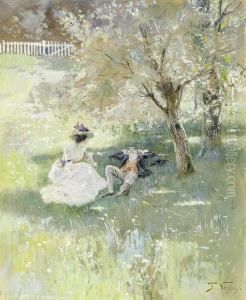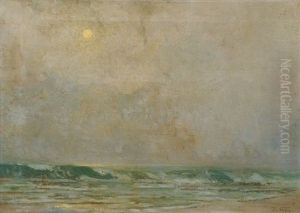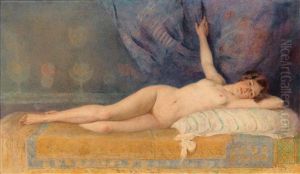Frederick Vezin Paintings
Frederick Carl Vezin, an American-born artist, is known for his career that spanned across continents, having made a significant impact in both the United States and Europe, particularly in Germany. Born on December 21, 1859, in Philadelphia, Pennsylvania, Vezin demonstrated an early talent for the arts, which he pursued with vigor throughout his life.
Vezin's initial art education began in his home country, but his desire to expand his horizons led him to move to Europe, where he furthered his studies. He attended the prestigious Royal Academy of Fine Arts in Antwerp, Belgium. There, he honed his skills and was greatly influenced by the rich art scene and the works of European masters.
Post his education, Vezin settled in Berlin, Germany, where he became part of the vibrant art community. His work during this period was characterized by a strong realism, with a particular focus on landscapes and cityscapes. He was adept at capturing light and atmosphere, which gave his paintings a distinctive and evocative quality. Vezin's European subjects, often depicting the life and scenes of Germany and Belgium, brought him considerable acclaim.
Around the turn of the century, Vezin's reputation had grown, and his works were exhibited widely, including in international exhibitions. He also spent time teaching, passing on his skills and knowledge to a new generation of artists. Despite his success in Europe, Vezin continued to maintain connections with the United States, exhibiting his works there and being involved in the American art scene.
Vezin's later years saw him continue to paint, though the onset of World War I and the subsequent changes in the art world did affect his career. Nevertheless, he continued to be an active member of the artistic community until his death in Berlin on January 7, 1933.
Frederick Vezin's legacy is one of a transatlantic bridge in the arts, having contributed to and been influenced by the artistic movements and sensibilities of both the United States and Europe. His works are held in various collections and continue to be appreciated for their technical skill and the beauty of their portrayal of the everyday life and landscapes of his era.































